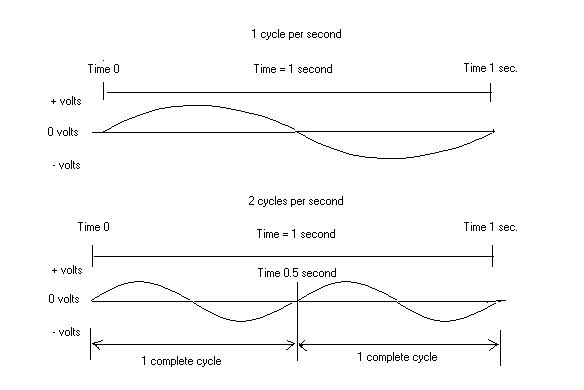WAVELENGTH CALCULATIONS
Formulas are based on the speed of light / electricity (approx. 186,000 miles per second).
We measure frequency by the number of cycles completed in one second. A frequency of 1
cycle per second would travel approx. 186,000 miles from start to finish.
At a frequency of 2 cycles per second ,the first cycle would only travel 1/2 that distance or
approx. 93,000 miles from start to finish. By the time the second cycle has completed (1 second)
the full distance(186,000 miles) would have been covered.
You can see from this that as the frequency increases the distance traveled by a single cycle
decreases. A conductor long enough to accommodate 1/2 of one cycle is an efficient radiator.
With frequencies in the (millions of cycles) megahertz range antenna lengths become quiet
manageable.
Examples:
492/1Mhz = 492 feet at 10 Mhz. only 49.2 feet and at 100Mhz only 4.92 feet
492/Fmhz = 1/2 wavelength in free space
Free space calculations are used to:
define the height of an antenna above ground
define the spacing between antenna elements
define the length of a transmission line which may then be multiplied by it's Velocity Factor to
determine its electrical length.
define length of antenna elements other than dipole type antennas ( inverted v's)
Dipoles
468/Fmhz = 1/2 wave element for dipole
Dipoles exhibit a phenomenon (defined as an" observable fact") of being about 5% shorter then the
492/Fmhz formulas predicts.(492* .95 = 467.4 or approx. 468). We call this shortening " capacitive
end effect". This is a fact, there are several theories as to why this is true.
Since this formula (468/Fmhz) is so well known it is often used where the 492/Fmhz should be used.
Often with acceptable results, the 5% being close enough .BUT NOT ALWAYS.

